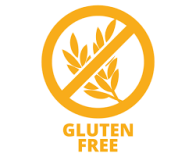۱- تاریخچه شرکت ما
۲- ارزشهای سازمانی ما
Why Iranian Quinoa
۱- تاریخچه شرکت ما
۲- ارزشهای سازمانی ما
Quinoa is a plant native to South America (Peru), which has been cultivated there for many years. In recent years, quinoa has also been cultivated in Iran. The question that arises among quinoa consumers is what is the difference between other countries quinoa and Iranian quinoa? In this article, we have tried to answer this question.
The history of quinoa in Iran
First, we will discuss the history of quinoa seed arrival in Iran. For the first time, quinoa seed was imported to Iran by Dr. Niaz Ali Sephovand in order to increase the cultivation and eventually lower the price of the final product and allow the general public to use this nutritious seed. That’s why they call him the father of Iran’s Quinoa. The seed imported to Iran is exactly the same seed killed in South America and no genetic changes have been made on it. This means that the quinoa grown in Iran is the same as the quinoa grown in South America and is not genetically modified.
Iranian non-transgenic quinoa
Here it is necessary to briefly talk about being transgenic. Transgenic means genetic modification of a seed in order to fix a defect or add an advantage to it.
For example, if a plant has a lot of pests that ultimately does not yield much, they transmute it and increase the plant’s fertility, so that after the pest infestation, the amount of the remaining product meets the costs of cultivation and is profitable. Or if they want to add a nutrient to an agricultural product so that the people of that area and those who consume it can benefit more from that nutrient, they can transmute the original seed and add that advantage that eventually all the products from it It happens that they have that situation.
For example, in Iran, crops such as cotton, canola, and soy are genetically modified because they have many pests, and in some regions and in most regions, they are genetically modified. But in the case of quinoa, it should be said that quinoa does not need to be genetically modified, because quinoa is a complete and very nutritious food and does not need to add any advantages, and on the other hand, because it has recently entered Iran, its pests in Iran It is very low, and it does not need to be transgenic to increase the fertility of this crop.
In addition, the quinoa plant itself has a large yield, and this is one of the reasons why farmers are more eager to cultivate this plant.
Regarding the pests of the quinoa plant in Iran, compared to South America, which is called the mother country of quinoa, it should be said that if a plant is cultivated in an area for many years, due to the fact that there are many pests for that plant in that area, for For some time, the cultivation of that particular plant is removed from that area and another crop that is resistant to those pests is planted in that area. This means that if the quinoa plant is cultivated in a country for many years, there will be more pests in that area, and this makes the plant need more pesticides to survive. So that after the pest infestation, the amount of the remaining crop will meet the cultivation costs and be profitable.
Fresh Iranian quinoa without preservatives
Another advantage of Iranian quinoa compared to other countries quinoa is that it does not require long-term storage and it reaches the consumer in the same harvest season or finally a season later and is consumed. It can withstand a long time of storage in different ports, and a lot of poisons and pesticides should be used for it.
These preservatives are used to increase the resistance of quinoa against pests in storage or moisture. If Iranian quinoa does not require any of these conditions and long storage times, and finally, the use of preservatives is not necessary.
To compare Iranian and imported quinoa, it is enough to soak both quinoa for a few hours and then place them in a similar environment for germination. You will see that Iranian quinoa sprouting corn is much more than the imported type.
Even if it is not necessary for imported quinoa to tolerate any of the storage conditions and these pesticides are used for it, the long-term storage period of the seed reduces its quality. The shorter the time between harvest and consumption, the better the quality and freshness of the seed, and ultimately the better the taste. The price of quinoa seeds is reasonable and you can get this product with excellent quality from quinoa stores and sales centers in Isfahan and other cities.
As most of the quinoa consumers who have used both imported types and Iran-grown quinoa have shown more desire and interest in the taste of Iranian quinoa. Of course, due to advanced processing steps, imported quinoa has better quality than Iranian quinoa in terms of appearance and coarseness. Needless to say, the quality of quinoa processing in Iran is fortunately improving every day and all the disadvantages of quinoa processing in Iran are being eliminated and the quality of the final products is improving.
Regarding the comparison of the quality of saponin extraction of Iranian quinoa and imported quinoa, it should be said that the amount of saponin allowed in consumed quinoa should be less than 100 mg, which is fortunately the saponin present in Iranian quinoa because the saponin extraction process is done well and completely standard. It is less than this value. It is interesting to know that one of the reputable brands that sell imported quinoa has more than the permissible amount of saponin in its quinoa.
۱- تاریخچه شرکت ما
۲- ارزشهای سازمانی ما
Quinao
Feel free to order your product for any packaging model you want. We mostly supply in bulk quantities, so we offer our products in bulk packing weights. However, if a customer needs their order in their desired size and weight,packaging materials can be put to use as per customer wish. We can add any other information per customer's request on their boxes. we recommend consulting our experts for the most suitable packaging according to the product you want.
۱- تاریخچه شرکت ما
Our Co is ready to prepare and export your products based on your desired packaging and label. Not only you can order your products by SHN Label on it, but also SHN CO allows customers to design their own label based on their interests including their name, logo, address or anything else according to their need.Let the globe get familiar with your brand story and make impressive impressions through SHN’s custom-designed packaging.
Packaging
Please feel free to send your inquiry 7/24 , we will get back to you asap . The whole team is at your disposal.
Inquiry form

Certificates
We supply what you need



















